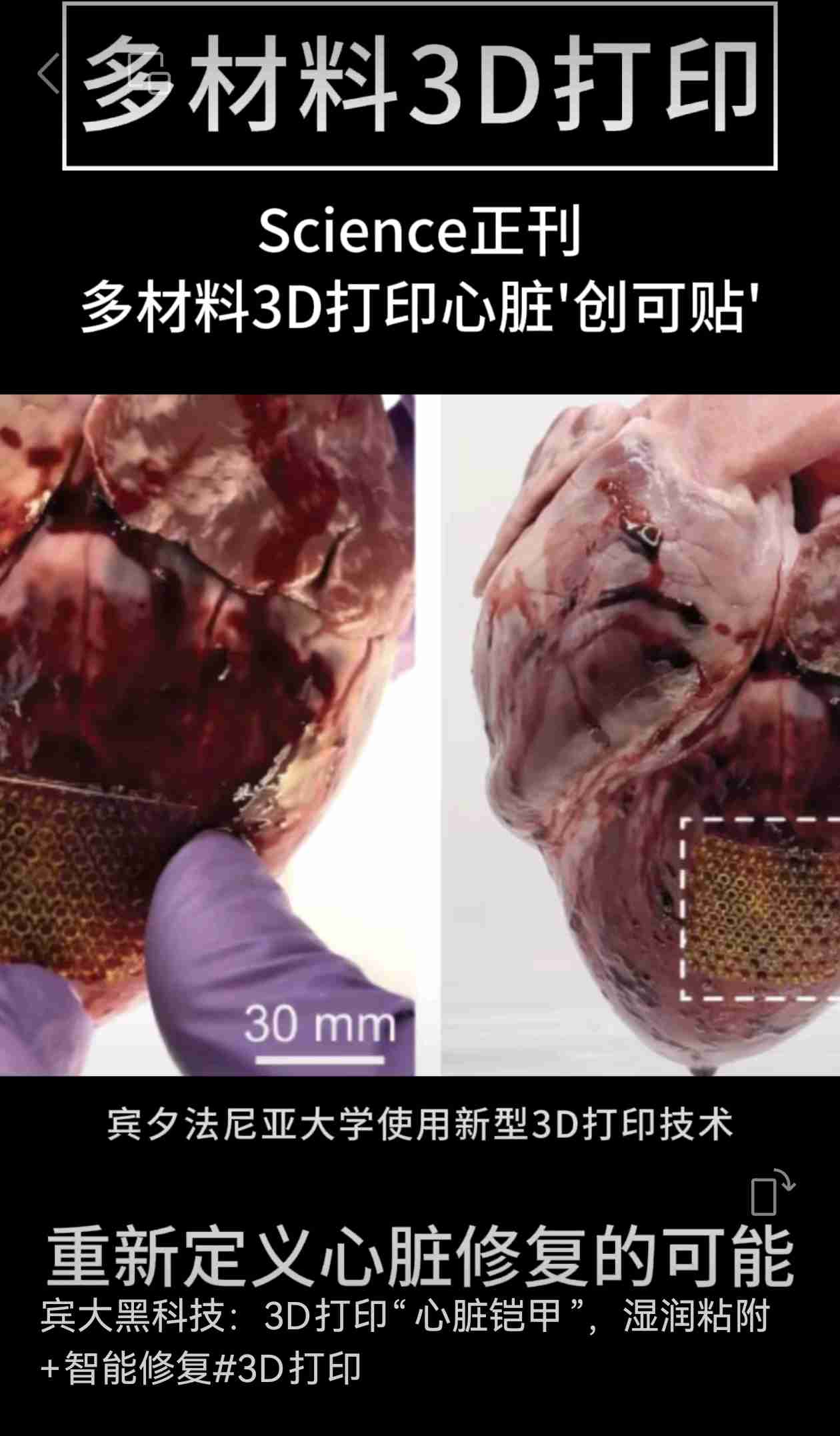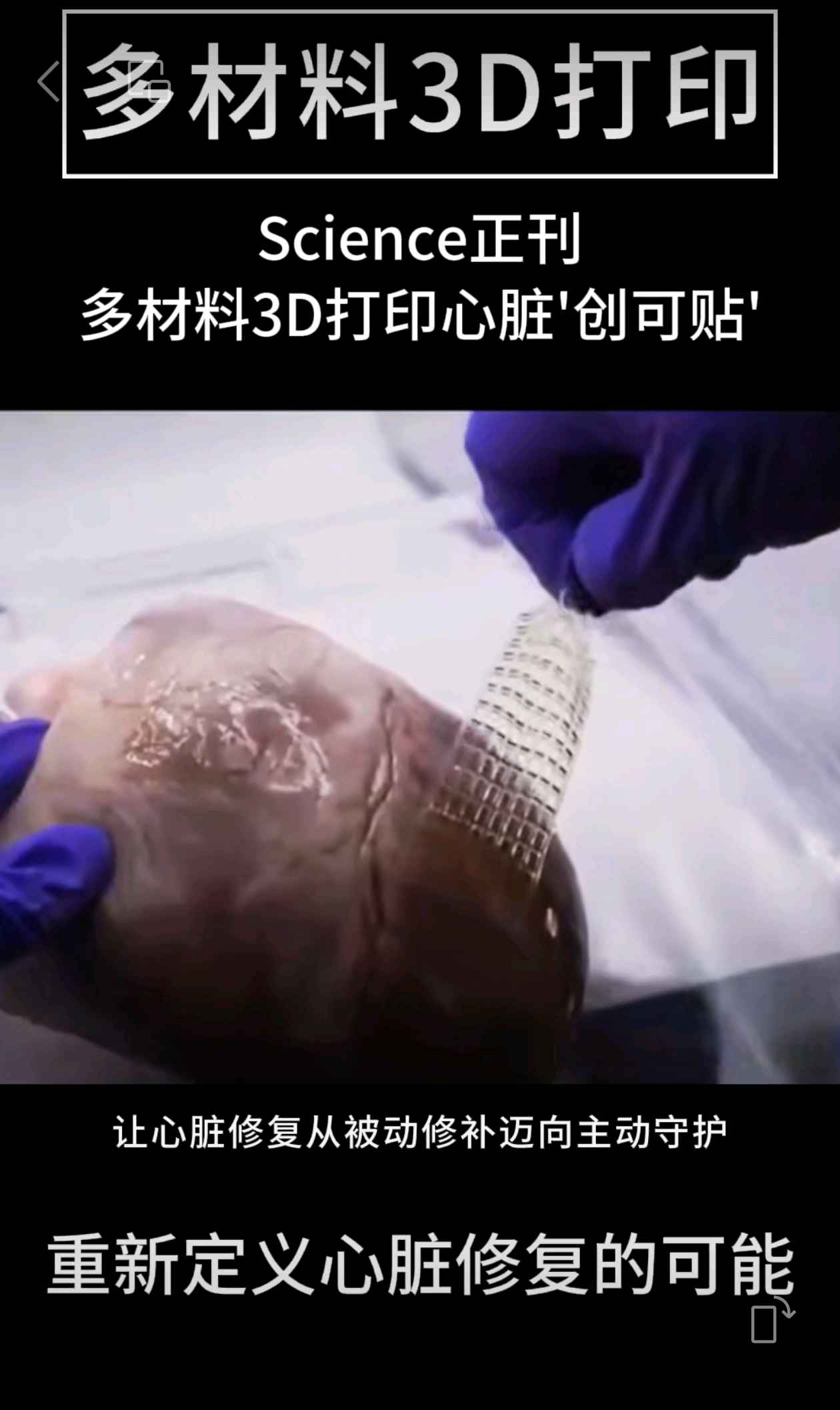

题目为 Additive manufacturing of highly entangled polymer networks(《高度交联聚合物网络的增材制造》),发表于国际顶级期刊 Science(《科学》)。美国科罗拉多大学博尔德分校与宾夕法尼亚大学研究团队开发出名为“CLEAR”的3D打印技术,其原理是模拟蠕虫复杂缠结结构,将长分子缠绕于材料中,通过氧化还原引发辅助光照后连续固化,控制分子交联,制得兼具弹性、韧性与粘性的材料。该材料能承受心脏跳动与关节压力,还可粘附于湿润组织,未来有望用于修复心脏缺损、递送再生药物、无针缝合等,为新一代生物材料开发及组织修复提供了创新思路。
The original paper, titled Additive manufacturing of highly entangled polymer networks, was published in the top international journal Science. The research team from the University of Colorado Boulder and the University of Pennsylvania developed a 3D - printing technology named "CLEAR". Its principle involves simulating the complex tangled structure of worms, entangling long molecules within the material, and through redox - initiated continuous curing assisted by light irradiation, controlling molecular cross - linking to produce a material with elasticity, toughness, and adhesiveness. This material can withstand heartbeats and joint pressures and adhere to wet tissues. In the future, it is expected to be applied in repairing heart defects, delivering regenerative drugs, needle - free suturing, etc., providing innovative ideas for the development of a new generation of biomaterials and tissue repair.
